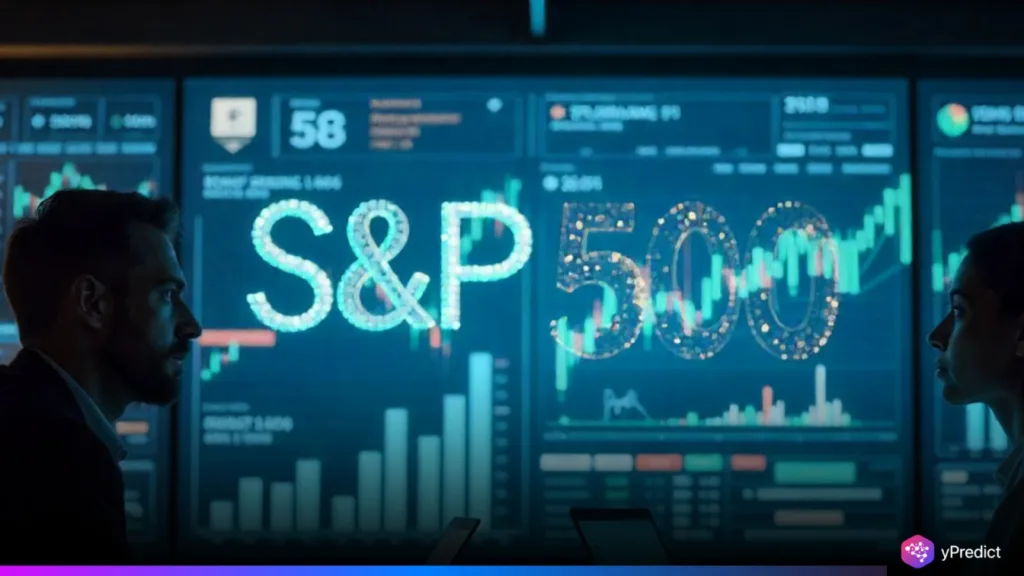
Global markets may witness a breakthrough as the S&P 500 and Dow Jones indices prepare to launch tokenized versions. This move builds on the 2025 Centrifuge Partnership, which previously brought the S&P 500 into the blockchain space. Industry experts view the development as a direct response to the growing appetite for Web3 Tokenization and the increasing demand for Blockchain Finance solutions. Analysts believe tokenized indices could change how institutions and investors engage with traditional assets, despite ongoing debates about market volatility and compliance.
Institutional Crypto Adoption Accelerates
The timing of this announcement aligns with 2025’s clear shift toward institutional crypto adoption. Reports show that tokenized assets already command a $370 million market, with platforms like OpenEden fueling this surge. Analysts at Ulam.io argue that institutions no longer see tokenization as experimental but as a necessary evolution for efficiency. The Centrifuge Partnership highlighted this transformation by proving that large-scale indices like the S&P 500 could move onto blockchain infrastructure.
This rising trend also responds to earlier research, including McKinsey’s 2024 report, which projected significant benefits for Web3 Tokenization, from 24/7 trading access to improved capital allocation. As these benefits materialize, institutions appear eager to capture value, even as volatility, led by Bitcoin’s historical swings, remains a cautionary marker.
Tokenization and the DeFi Shift
Observers describe the new tokenized offerings as more than an incremental step. They see them as part of a broader DeFi shift, where traditional financial markets overlap with decentralized mechanisms. Tokenization enables fractional ownership, reducing barriers for global investors. It also unlocks liquidity, addressing one of the longest-standing challenges in traditional finance.
S&P Dow Jones has signaled its intent to explore smart contract-powered funds, which could streamline fund management while lowering operational costs. Such innovations could firmly position tokenized indices as a bridge between Wall Street and the blockchain economy.
Cross-Border Investment Opportunities
One of the most discussed aspects of tokenized indices lies in their potential to transform cross-border investments. By embedding Web3 Tokenization into the structure of major indices, S&P and Dow Jones aim to allow investors worldwide to access U.S. equities seamlessly. Liquidity pools and blockchain rails could eliminate the friction often seen in foreign investment channels.
This transformation resonates with institutional investors seeking efficient global diversification. With tokenized access, funds could move faster, bypass intermediaries, and increase transparency. The Centrifuge Partnership already demonstrated how blockchain could handle the complexity of large asset pools, building confidence in its scalability.
Regulatory Challenges Remain
Despite optimism, regulatory compliance stands as a significant hurdle. Insights from ainvest.com, published August 16, 2025, underline that tokenized indices will need to navigate strict oversight before they come to market. Regulators need to find the right mix of protection for investors and innovation. This quandary may become a point of contention within the industry, delaying rollouts.
The introduction of tokenized indices is an indication of government regulation’s timeline for technological improvement; however, it is also a timeline to recognize that we are attempting to respond quickly to the market’s need for quicker and increasingly open access to traditional assets. Industry and consumer demand spur any improvement, and opening digital assets is at the core of the Centrifuge Partnership developing this proposal, and Web3 Tokenization seems destined to become a leading narrative for 2025.
As financial markets rise and act, the junction for institutions, DeFi innovators, and regulators is a boiling point between adoption and caution. Whether it ends up becoming this watershed moment for Blockchain finance will depend on the success with which the industry strikes the balance between volatility, compliance, and trust from investors.






